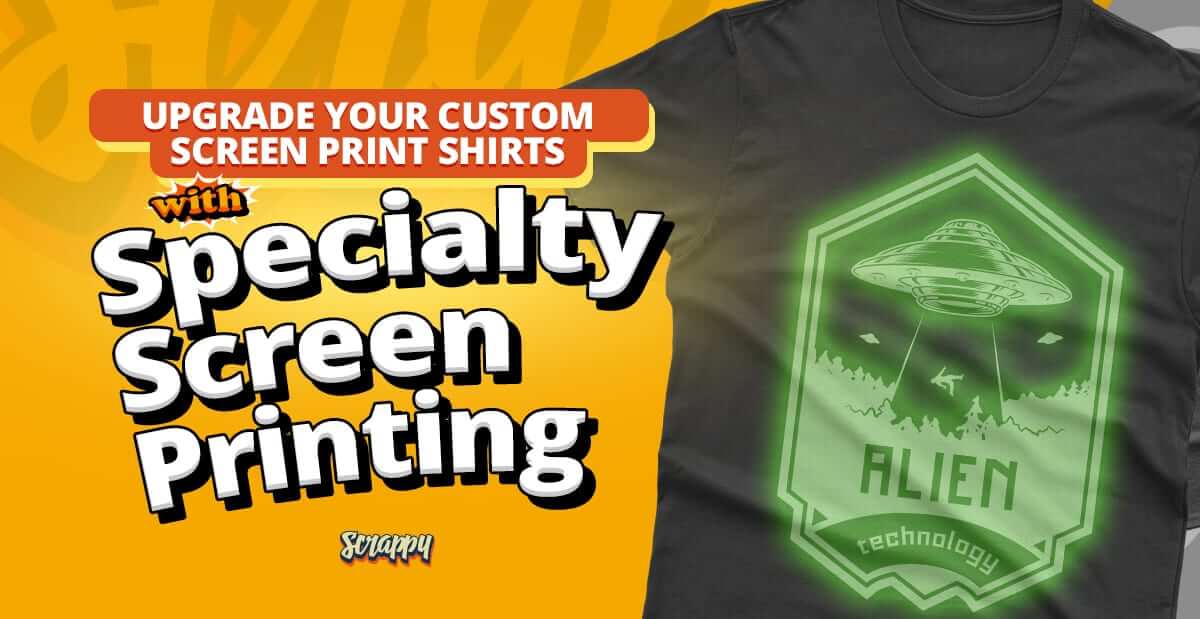Premium Screen Printing Kit for Business Startups
Wiki Article
Display Printing Uncovered: Whatever You Need to Learn About Tee and Garment Printing Techniques
If you have actually ever before questioned exactly how those vivid layouts wind up on your preferred tee shirts, you're in the right area. Display printing is an interesting technique that integrates art with method, using limitless opportunities for imagination. Recognizing the principles, from tools to ink choices, can significantly influence your outcomes. Ready to explore the crucial elements that make display publishing an art form? Allow's discover the information that can raise your projects.
The Basics of Display Printing: Just How It Works
When you dive into screen printing, you'll discover it's both a scientific research and an art. At its core, display printing entails producing a stencil, or screen, that enables ink to go through only in particular areas (screen printing kit). You start by picking your design and preparing your screen with a light-sensitive emulsion. Once you subject this emulsion to light, it sets, leaving your design as an unfavorable room.Next, you'll blend your inks and prepare your printing surface. Setting the screen over the material, after that make use of a squeegee to push ink through the screen onto the garment. This process requires precision, as you want clear, vibrant prints. After printing, you'll treat the ink with heat, guaranteeing it sticks to the material and lasts through washes. Each action is important, and understanding them will elevate your display printing abilities, changing easy garments right into special, meaningful items.
Types of Screen Printing Techniques
When you grasp the basics of display printing, it's time to explore the various strategies that can boost your designs. One preferred approach is standard screen printing, where ink is pressed via a stenciled display.If you're intending for fine details, take into consideration discharge printing. This method removes dye from the textile, leaving a soft, vintage appearance. An additional choice is plastisol printing, understood for its sturdiness and brilliant colors, making it a favored for many brands. Ultimately, trying out halftone printing to develop slope results and detailed designs. Each technique has its special beauty, so don't think twice to try them bent on find what matches your style best!
Essential Equipment for Screen Printing
To attain spectacular results in display printing, having the best tools is basic. You'll require a strong screen printing structure, which holds the mesh that transfers your design onto the garment. Next off, buy top notch squeegees; these are crucial for using ink evenly across the screen. You'll also call for a good exposure device to develop your displays, along with a washout cubicle for cleaning them after usage. A trusted warm source, like a conveyor dryer or warmth press, is crucial for treating your prints to assure long life. Do not forget an appropriate work space, geared up with tables and storage for your products. Lastly, protective equipment, such as masks and handwear covers, will certainly keep you safe from chemicals and inks. With the right tools, you'll be well on your way to creating professional-quality prints.Choosing the Right Inks and Materials
When picking inks and materials for display printing, you need to consider the kind of ink that functions finest for your job. Consider fabric compatibility to ensure your designs look last and terrific long. Likewise, discover environment-friendly ink alternatives to make your printing process a lot more sustainable.Kinds of Display Inks
Picking the ideal screen ink is crucial for accomplishing vivid, long lasting prints that fulfill your task's needs. There are several kinds of display inks to examine. Specialty inks, such as metallic or glow-in-the-dark, can add unique results to your designs.
Textile Compatibility Considerations
Understanding material compatibility is essential for achieving high-grade display prints, particularly since various products react distinctively to numerous inks. When choosing inks, consider the fabric kind-- cotton, polyester, or blends. For cotton, water-based inks work well, offering soft qualities and breathability. Polyester, on the other hand, frequently needs plastisol inks for much better adhesion and vibrant colors. If you're printing on blends, you may need to use a combination of both types. Always examine your inks on sample material to assure they stick effectively and maintain color stability. Additionally, maintain in mind that material weight and structure can affect the final end result, so picking the appropriate ink and material combination is crucial for your project's success.Eco-Friendly Ink Options
Eco-friendly inks are ending up being a prominent choice for screen printers who desire to minimize their ecological impact while maintaining quality. When choosing inks, take into consideration water-based inks, which are less damaging and less complicated to clean up compared to typical solvents.Furthermore, search for inks made from renewable resources, such as soy or vegetable-based alternatives. By picking the best inks and materials, you'll not only develop magnificent styles however also add to a more lasting printing process. Make the switch, and your prints will mirror your dedication to the setting!
Preparing Your Layout for Screen Printing

File Layout Needs
To guarantee your layout looks lively and sharp on fabric, you'll require to pay close interest to file format requirements for display printing. Make certain your layout has a transparent history to prevent unwanted white sides on your prints. Keep shade modes in mind; CMYK is common for display printing, so transform your RGB develops accordingly.Color Separation Strategies
Color separation is an important action in preparing your layout for display printing, and mastering it can greatly improve your print top quality. You'll require to damage your design into specific colors, as each color needs a separate screen throughout printing. This accuracy not just assures accurate color representation yet additionally enhances the printing procedure.Resolution and Dimension
Accomplishing the very best lead to screen printing starts with guaranteeing your layout has the ideal resolution and dimension. Preferably, your art work needs to be at least 300 DPI (dots per inch) for sharp, clear prints. If you use lower resolution, your final item might look less than professional and pixelated.When it involves dimension, take into consideration the measurements of your print area. Style your artwork to match the final print size, preferably developing it in the actual measurements you'll be publishing. In this manner, you'll stay clear of any unforeseen scaling concerns.
Always inspect your style in both vector and raster layouts. Vector graphics can be scaled without shedding top quality, making them optimal for screen printing. Preparing correctly will guarantee your style looks fantastic on every garment!
Step-by-Step Display Printing Process
Screen printing is a vibrant process that permits you to produce dynamic designs on various surface areas. To get begun, you'll require a screen, solution, and your selected ink. Prepare your display by cleaning it extensively. Next off, use the solution equally and allow it dry in a dark location. As soon as dry, subject your screen to light with your style put on it, which will set the emulsion where the light hits, creating a pattern - screen printing kit.After cleaning out the unexposed solution, your display is all set. Set it up on your printing surface area and straighten your garment beneath it. Put ink onto the display and make use of a squeegee to push the ink through the stencil onto the material. Raise the screen carefully and let the print completely dry. Treat the ink utilizing warm to guarantee longevity. That's it! You've successfully screen published your style.
Tips for Effective Display Printing Projects
While you're diving into your screen printing tasks, keep in mind that prep work is essential to success. Beginning by collecting all your materials-- inks, screens, squeegees, and garments. A clean work area assists avoid unwanted mistakes, so clean up before you start.Next, confirm your artwork is high-resolution and properly sized for your garment. Check your screen for correct exposure and clean it extensively to stay clear of smudges. When blending your inks, follow the supplier's guidelines to accomplish the ideal consistency.
Throughout printing, apply also stress with your squeegee for regular outcomes. Don't hurry; take your time to validate each print meets your requirements. After printing, allow your garments completely dry entirely prior to managing or packaging them.
Lastly, always keep an example of your benefit future referral. This means, you can examine your progression and boost your methods gradually. Delighted printing!

Regularly Asked Inquiries
The length of time Does It Take to Establish a Display Printing Work?
Establishing up a screen printing task generally takes around 30 minutes to an hour. You'll prepare the screens, mix inks, and adjust the press. The time differs based on complexity and experience, so remain organized!Can I Publish on Various Material Types Using the Very Same Method?
Yes, you can print on various material types using the exact same technique, screen printing kit yet you'll need to adjust your inks and setups. Some textiles soak up ink in a different way, so experimenting guarantees the most effective results for each product.What Prevail Errors to Avoid in Display Printing?
When display printing, prevent usual errors like using the incorrect ink, neglecting correct exposure times, or skipping pre-press checks. Constantly check your setup and preserve tidy screens to ensure quality results each time.Just How Can I Appropriately Tidy and Preserve My Display Printing Equipment?
To appropriately tidy and keep your display printing devices, you ought to routinely clean displays with suitable solvents, inspect mops for wear, and assure all devices are saved dust-free and dry. Consistency stops pricey repair work and improves efficiency.Is Display Printing Eco-friendly Contrasted to Various Other Techniques?
Display printing can be extra eco-friendly than other methods, particularly if you utilize eco-conscious materials and water-based inks. By choosing lasting materials and practices, you decrease waste and minimize your effect on the planet.Screen Printing Uncovered: Everything You Need to Know Concerning Tee and Garment Printing Methods
At its core, screen printing includes producing a pattern, or screen, that permits ink to pass with just in specific locations. Placement the screen over the textile, after that utilize a squeegee to press ink via the screen onto the garment. One popular approach is conventional display printing, where ink is pushed via a stenciled screen.When choosing inks and products for screen printing, you need to take into account the kind of ink that functions best for your job.
Report this wiki page